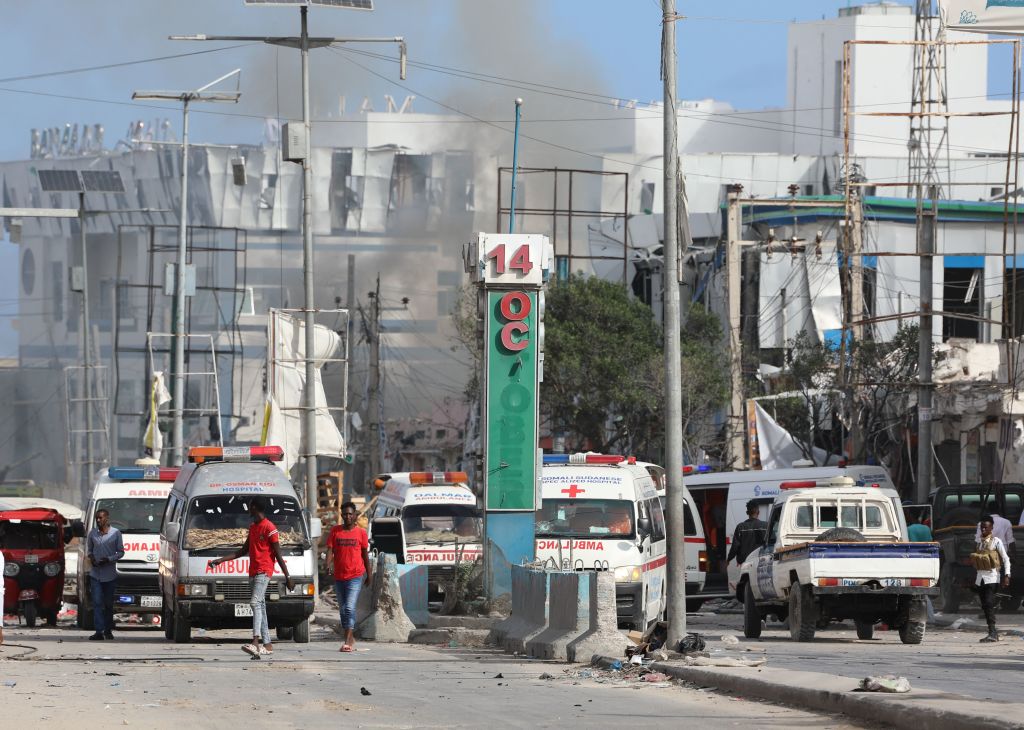Sub-Saharan Africa has Highest Number of Terror Attacks Globally
ADF STAFF
Sub-Saharan Africa in 2023 emerged as the region with the highest number of terrorist attacks worldwide, a new report finds.
The International Institute for Strategic Studies’ (IISS) Armed Conflict Survey 2023 tracked the political, military and humanitarian dimensions of armed conflicts globally from May 2022 to June 2023. During that period, continental fatalities due to terrorist violence increased by 48%, and the number of violent incidents increased by 22% over the previous time frame.
“The situation and conflict landscape has gotten significantly worse in the last decade and a half,” Benjamin Petrini, IISS research fellow for conflict, security and development, said during the survey’s launch. “Since 2010, the number of overall conflicts more than doubled.”
According to Petrini, Africa now has the largest number of conflicts globally and the largest share of fragile and conflict-affected countries.
Regional Affects
The survey detailed the end of the civil war in Ethiopia’s Tigray region; the breakout of civil war in Sudan; rising tensions between the Democratic Republic of the Congo (DRC) and Rwanda; and the continued extremist violence and political instability in the Sahel region.
The epicenter of the Sahel conflict is the tri-border area between Burkina Faso, Mali and Niger.
“The level of violence remains very high [in the Sahel],” Petrini said. “France and the United Nations peacekeeping operations have both withdrawn, and Niger joined Mali and Burkina Faso in overthrowing its civilian government. So, regionally and internationally, the conflict has changed quite significantly.”
Although extremist violence in the Lake Chad Basin is mostly in Nigeria, Cameroon, Chad and Niger also are affected. Ansarul Muslimina Fi Biladis-Sudan, or Ansaru, and the Islamic State West Africa Province, or ISWAP, are the most dominant groups in the region. Both groups are linked to Boko Haram and commonly engage in banditry, kidnapping and cattle rustling.
In Somalia, the survey found that clan militias, the Somali National Army, federal and state forces, the African Union Transition Mission in Somalia (ATMIS), and international forces have made gains against al-Shabaab. But the group is proving difficult to eradicate.
“A critical issue is how to re-establish a state presence in newly liberated areas that have been controlled by [al-Shabaab] for decades,” IISS researchers wrote.
ATMIS is withdrawing troops from Somalia in phases and is expected to hand over all security responsibilities to Somali forces by the end of December.
After a decrease in violence in 2021, militant activities returned to rural parts of northern Mozambique in 2022 due to incidents attributed to organizations linked to the Islamic State group (IS). Some analysts fear the violence will expand to other rural areas and regions.
Countries such as Kenya, Tanzania and Uganda in East Africa, and Benin, Côte d’Ivoire, Ghana and Togo in West Africa, often were affected by cross-border extremism, including recruitment efforts by terrorists and the smuggling of arms and other illicit items for revenue.
The IISS found that the conflict in Libya remained at a stalemate, while Egypt saw a decrease in fighting.
Terror Attacks Increase
The annual number of terror attacks in Sub-Saharan Africa has doubled since 2016, according to the IISS report. Militants in the region mostly act on local grievances and become involved in community and ethnic conflicts.
According to the IISS, international ties between local groups and the IS and al-Qaida have weakened, and connections between insurgent groups “now appear to be limited to intra-regional collaborations.”
The survey found that terrorist organizations’ increasing reliance on local funding, typically through extortion, put them at odds with populations in some areas, such as Somalia, where al-Shabaab faces a backlash.
Although extremist groups in Sub-Saharan Africa often are linked to the IS and al-Qaida, the IISS found little evidence that they are financially supported by either organization.


Comments are closed.